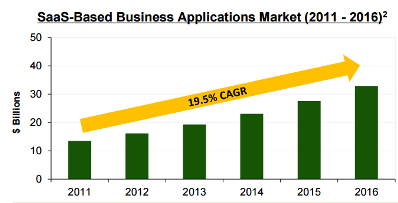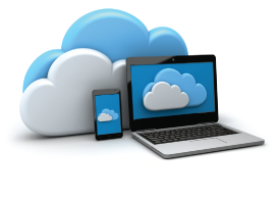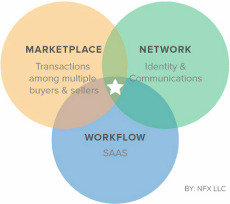Top Reasons SaaS is a Good Fit for your Travel Business
By David Eddy on Oct 13, 2015 12:05:00 PM

Software as a service (SaaS) is a term which is becoming increasingly familiar to many people. However, familiarity can often disguise lingering misconceptions. In the case of SaaS, a common misconception is that it refers to technology that lives in the “cloud”. In fact, SaaS is not the same as cloud technology; a distinction which carries through to its business model, drives its value proposition and – for many travel businesses – provides a compelling case to be their technology choice.
What is SaaS?
Cloud technology refers to servers and software residing in remote physical locations and accessed via the Internet by a web browser. Some clouds are private and limited in terms of hosting and access. others are public and have no such restrictions.
SaaS is a busines s model in which software is licensed by customers on a subscription basis (typically a monthly fee) and hosted in a cloud environment so it can be accessed by a thin client and web browser. Salesforce.com, for example, is a customer relationship software (CRM) product suite which its customers access and use for a monthly charge. This distinction is important because it is at the heart of some significant SaaS trade-offs between benefits and limitations.
s model in which software is licensed by customers on a subscription basis (typically a monthly fee) and hosted in a cloud environment so it can be accessed by a thin client and web browser. Salesforce.com, for example, is a customer relationship software (CRM) product suite which its customers access and use for a monthly charge. This distinction is important because it is at the heart of some significant SaaS trade-offs between benefits and limitations.
Common SaaS Benefits
Rapid Implementation: Because SaaS applications (e.g. Salesforce) are already deployed in a cloud production environment, deployment is replaced by a rapid configuration of a thin client application which provides browser-based, user interface (UI) Internet access. In many SaaS instances a new customer enjoys same-day implementation.
Minimal Investment & Scalable Expenses: because SaaS services are based on pre-existing hardware, software and infrastructure, the customer’s upfront investment is minimal. Typically the SaaS business model spreads costs over a large customer base, allowing it to leverage economies of scale and offer highly attractive monthly fees - based on use rather than a fixed amount. This variable monthly fee feature is often referred to as “software by the drink” and allows customers to align fees with use and benefits.
Frequent and Affordable Upgrades: just as SaaS’s large technology investments are spread across many customers, the cost of new application features and enhancements are also economically amortized across the customer base. By making upgrades affordable, customers are not only able to adopt the latest technology; SaaS providers are also motivated to work closely with user groups to identify additional product development opportunities.
Safety in Numbers: Cloud hosting isn’t magical; it has the same potential for failure as any other physically hosted hardware and software. So it’s a very serious matter if, for example, a customer’s CRM application goes down. But, at the end of the day, it’s only one customer with a bad problem.
With SaaS, on the other hand, an entire business model is at risk because a universe of customers is impacted by any hosting and/or access failure. The protection of a business model justifies a higher level of mitigation investment than would be the case for a single customer.
Set it and Forget it: perhaps an exaggeration – but not much. Your SaaS provider has the resources and experiences to make technology perform exactly as it should, plus customer service to support your account 24/7/365. More importantly, they own the accountability for performance and service levels. With an individually licensed and maintained application this expense is borne solely by that company. It is often difficult for a travel business to justify taking on those responsibilities and costs.
Given this list of benefits, it’s not surprising the popularity of the SaaS bus iness model has caught fire across the travel industry. In fact, SaaS has become increasingly popular across all industries. According to Gartner Research, sales of SaaS business applications have doubled since 2011 and are forecast to climb at a compound annual growth rate (CAGR) of 19.5% through 2016.
iness model has caught fire across the travel industry. In fact, SaaS has become increasingly popular across all industries. According to Gartner Research, sales of SaaS business applications have doubled since 2011 and are forecast to climb at a compound annual growth rate (CAGR) of 19.5% through 2016.
SaaS Limitations
As mentioned earlier, there are trade-offs behind these impressive benefits; limitations which are grounded in the distinction between SaaS and Cloud technology.
Uniformity: A travel business could choose to license, deploy and customize an application within a Cloud hosting environment - platform which would enable easy access and provide a secure infrastructure. An enterprise license would allow any customization that would enable the application to fit your specific needs. When those needs also provide competitive advantages, the cost of licensing and customizing may be a very worthwhile investment. Certainly your competitors with SaaS applications will be hard pressed to match those advantages because SaaS allows for little or no customization – every customer is limited to the same features, configurations and functionality.
Cost Elasticity: Cloud hosting deployment is typically much more elastic than SaaS, allowing infrastructure resources – and their associated costs - to quickly ramp up and down on hourly, daily or weekly basis in response to fluctuating business conditions. SaaS is flexible, but generally on a much broader, monthly, basis. This difference in resourcing and cost elasticity can be significant.
A Key Role for SaaS in Travel Service Innovation
In addition to these SaaS benefits, there are other reasons to believe SaaS will equip your travel business to grow faster and more profitably than competitors in the near future.
The travel industry is currently something of a contradiction. On one hand, travel has become a commodity, expanding revenues but depressing profit margins. On the other hand, consumers are looking for highly personal experiences - an element of customized spontaneity which can only be possible through innovative travel technology - particularly mobile.
An example of this contradiction is http://www.rome2rio.com/. This site provides head-to-head price and feature comparisons for all the travel components of a trip. It also provides various tools for customers to “discover the possibilities”. Yet – unless someone is highly motivated or blessed with abundant time – the daunting challenge of actually orchestrating those possibilities into a delightful trip becomes very apparent.
An emergin g answer to the challenge of providing customers with highly personal travel experiences is Market Networks. Still in its formative stage, Market Networks within the travel industry may grow into a successful strategy by which various suppliers collaborate to create compelling travel products. These travel products would be an integration of commodity elements such as air with others that reflect the specialized knowledge and expertise of the group.
g answer to the challenge of providing customers with highly personal travel experiences is Market Networks. Still in its formative stage, Market Networks within the travel industry may grow into a successful strategy by which various suppliers collaborate to create compelling travel products. These travel products would be an integration of commodity elements such as air with others that reflect the specialized knowledge and expertise of the group.
SaaS is a critical component in the formation of Market Networks because it provides the necessary standardization of technology and workflow between the group members.
SaaS standardization provides travel businesses with a wide choice of tools to efficiently integrate applications across the group. This integration enables operating and pricing information to be exchanged within the group and incorporated in final products. A collaboration of knowledge, expertise and accurate information would result in unique travel products, competitively priced but with margins that reflect the value created for the customer.
By taking on the role of enabler in Market Networks, SaaS shows its potential to provide benefits around revenues and operating margins. By combining those speculative advantages with known benefits for reduced capital investment and lower technology costs, the SaaS business model makes a strong case for inclusion in any travel company’s strategic roadmap.
- travel technology (58)
- Travel Industry (49)
- travel agency (31)
- travel erp (31)
- travel trends (28)
- travel booking system (23)
- TINA (21)
- travel company (19)
- Tour Operator (18)
- Product updates (17)
- Travel Management Company (17)
- AIDA (15)
- TBS (15)
- dcs plus news (14)
- tour operator solution (14)
- travel website (14)
- travel erp system (13)
- Business Travel (12)
- Mobile App (12)
- Travel App (12)
- mid back office solution (12)
- trends (12)
- Industry Events (11)
- Mobile Technology (11)
- TMC (11)
- travel agents (11)
- erp (10)
- erp system (10)
- Corporate Travel (9)
- Tour Operators (9)
- Travel booking engines (9)
- dcs plus (9)
- online travel agency (9)
- travel agent (9)
- Mobile Bookings (8)
- travel (8)
- travel agencies (8)
- 2017 (7)
- Mobile Travel (7)
- travel business (7)
- travel software (7)
- Digital Technology (6)
- Insider (6)
- Millennials (6)
- Online booking systems (6)
- Travel Management Companies (6)
- process automation (6)
- travel companies (6)
- Big Data (5)
- Business Traveler (5)
- Partners interviews (5)
- Tour Operator Software (5)
- customer retention (5)
- travel agency technology (5)
- Booking engines (4)
- CSBT (4)
- Mobile Device (4)
- OTAs (4)
- Static databases (4)
- Tour Companies (4)
- Travel Policy (4)
- Travel booking systems (4)
- Travel suppliers (4)
- back office automation (4)
- millennial travelers (4)
- online travel (4)
- responsive travel website (4)
- technology (4)
- travel website conversion (4)
- 2016 (3)
- Content mapping (3)
- Databases (3)
- Demographics (3)
- Food and Adventure Tourism (3)
- Mobile Apps (3)
- Mobile travel apps (3)
- Travel Distribution Channels (3)
- Travel Management Software (3)
- Travel customers (3)
- Travel history (3)
- anniversary (3)
- automated processes (3)
- content matching (3)
- global travel industry (3)
- social media (3)
- travel agency workflow (3)
- travel back office (3)
- travel marketing (3)
- travel process automation (3)
- Advanced Booking Systems (2)
- B2B Travel Resellers (2)
- Bleisure (2)
- Branding (2)
- Business Process Automation (2)
- Business Travelers (2)
- Customer engagement (2)
- Financial Reporting (2)
- Food Tourism (2)
- Inbound Marketing (2)
- Infographic (2)
- Leisure Travel (2)
- Saas (2)
- Templates (2)
- Travel Costs (2)
- Travel bookings (2)
- Travel start-up (2)
- Travel website abandonment (2)
- WTM 2016 (2)
- abandoned travel bookings (2)
- corporate self booking tool (2)
- engagement marketing (2)
- internet booking engine (2)
- millennial traveler (2)
- new travel company (2)
- office (2)
- online reputation management (2)
- online travel reviews (2)
- reporting (2)
- software (2)
- start-up tips (2)
- travel agency management (2)
- travel agency website (2)
- travel experience (2)
- travel mobile app (2)
- travel packages (2)
- travel reservation system (2)
- travel system (2)
- travelers (2)
- web-based travel erp (2)
- 2020 (1)
- 360 Customer View (1)
- Advanced Accommodation Contract Management (1)
- Adventure travelers (1)
- Apps (1)
- B2B Reseller (1)
- B2B Resellers (1)
- B2C (1)
- BI Reporting (1)
- Budget traveler (1)
- Cancellations (1)
- Chat (1)
- Chinese millennial (1)
- Cloud (1)
- Cognitive computing (1)
- Comparison shopping (1)
- Conference (1)
- Contact matching (1)
- Content (1)
- Cruise (1)
- Culinary traveler (1)
- Customer relations (1)
- Digital Innovation (1)
- Digital Natives (1)
- Documents (1)
- Emerging market travelers (1)
- Emerging markets (1)
- Errors (1)
- Experimental travel (1)
- Financial Dashboard (1)
- Import rates (1)
- Instant messaging (1)
- Integrate with Accounting Software (1)
- Internet (1)
- Luxury traveler (1)
- Mobile Transaction (1)
- Mobile payments (1)
- NDC distribution (1)
- Operational Reporting (1)
- Reseller networks (1)
- Resellers (1)
- Response (1)
- Subagents Network (1)
- TINA Academy (1)
- TTE (1)
- Travel Reseller Network (1)
- Travel Revenue Management (1)
- Travel booking problems (1)
- Travel finance reporting (1)
- Travel stats (1)
- WTM (1)
- abandonment (1)
- accomodations (1)
- advanced reporting (1)
- airline direct connect technology (1)
- ancillary services (1)
- cloud computing (1)
- collection (1)
- collection challenges (1)
- common data model (1)
- conversion rates (1)
- cost control (1)
- credo ventures capital invests in dcs plus (1)
- customer reviews (1)
- data analysis (1)
- dcs plus credo investment (1)
- dcs plus credo ventures (1)
- deloitte technology fast 500 EMEA (1)
- digital transformation (1)
- e-invoicing KSA (1)
- email marketing (1)
- email marketing for OTAs (1)
- erp e-invoicing (1)
- lost travel bookings (1)
- modern travel agencies (1)
- networks (1)
- new features (1)
- offers (1)
- online customer review (1)
- online reputation (1)
- online travel agencies (1)
- risk management (1)
- sales (1)
- senior travelers (1)
- shopping baskets (1)
- shopping carts (1)
- social network (1)
- standardized processes (1)
- static content (1)
- travel SaaS (1)
- travel account services (1)
- travel agency customers (1)
- travel agency profitability (1)
- travel analytics (1)
- travel blog (1)
- travel planning (1)
- travel reviews (1)
- travel shopping carts (1)
- travel software for agencies (1)
- travel software system (1)
- travel technology europe (1)
- travlist smart mobile app (1)
- trend (1)
- trusted adviser (1)
- trusted advisor (1)
- upsell functionality (1)
- vouchers (1)
- website traffic (1)
- zatca (1)
Subscribe by email
You May Also Like
These Related Stories

Increase Travel Website Conversion Rates with Common Sense

The Importance of Reporting for Travel Agents

Comments (1)